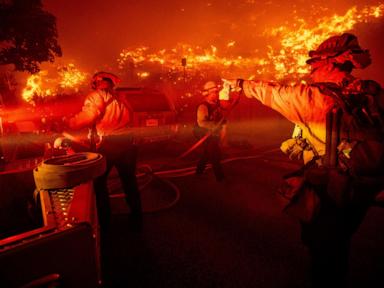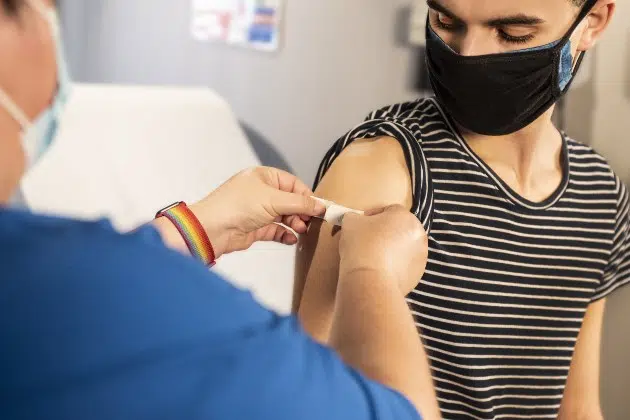(KNSI) – As Minnesota nears 3 million residents partially or fully vaccinated against COVID-19, the state sees its lowest cases per 100,000 rate since last July, according to Minnesota Department of Health officials.
“The statewide rate of new cases continues to decrease; we dropped to 9.7 daily new cases per 100,000 residents,” said state infectious disease director Kris Ehresmann. “The statewide case rate has dropped to a rate that we have not seen since early July of last year, so that is very positive and very significant.”
Minnesota’s latest test positivity rate — the proportion of COVID-19 tests that come back positive — has also declined below the state’s 5-percent caution threshold at 3.4 percent. Wednesday’s COVID-19 report showed 128 new cases across the state and no new deaths.
Ehresmann did emphasize that the state’s testing rate has dipped below its goal of completing 300 tests per every 10,000 residents each week.
“We’re now at 244.8 weekly tests per 10,000 residents,” Ehresmann said. “There still is an important role for testing, especially among those who are not yet vaccinated or who recently traveled outside of the country.”
Nevertheless, the state’s COVID-19 cases have significantly decreased since mid-April, and MDH Commissioner Jan Malcolm says vaccinations, natural immunity from previous COVID infections and more people gathering outdoors in the warmer weather all play a role in keeping cases low. She cautioned that natural immunity is expected to only last 90 days after recovering from COVID.
It is also not clear yet if the virus has a seasonal pattern, like the flu, where fewer people get sick during the summer and cases increase in the winter.
“Does this virus show seasonality? I don’t know that we can say that,” Ehresmann said. “The thing about spring and summer is people are able to be outdoors more. That’s a much safer environment. Keep in mind that last year, at this time, we were coming off of the shutdown, and so that in and of itself helped to control and reduce transmission.”
If there will be a rise in infections following the end of Minnesota’s mask mandate and Memorial Day weekend, MDH officials say those numbers would appear in about four weeks.
“Our hope is that with the increasing vaccination coverage that we’re seeing, that should help to moderate any potential blips,” Ehresmann said.
As for the vaccination effort, Minnesota has been focusing on equity by race and social vulnerability. Dr. Nathan Chomilo, MDH’s COVID-19 vaccine equity director, says disparities still exist between racial groups, but some of those gaps are tightening.
“As of May 22nd, vaccine coverage with at least one [dose] is highest among Minnesotans identifying as Asian/Pacific Islander with overall first dose coverage rates of 66.3 percent for those aged 16-plus,” Chomilo said. “Black and Hispanic communities saw some of the highest gains over the last week, and their first dose rates among those 16-plus currently sit at 45.3 percent for Black Minnesotans and 48.4 percent for Hispanic Minnesotans.”
Vaccination among white Minnesotans 16 and older is at 60.8 percent. That figure is 45.6 percent for Indigenous Minnesotans, and the MDH’s COVID-19 vaccine data dashboard says 16 percent of the state’s multiracial population 16 and older is vaccinated.
The state is also measuring vaccination equity by looking at how many people in lower social vulnerability index groups have gotten the shot versus those who are in higher SVI locations. The state defines SVI as a ranking of the different dimensions of disadvantages people might face in their ZIP code: “socioeconomic status, household composition and disability, minority status and language, and housing type and transportation” all play a role. In short, people who face more systemic disadvantages are likely at higher social vulnerability and can be affected by a lack of access to vaccination opportunities.
“When looking at vaccine coverage by SVI … coverage remains lowest among Minnesotans living in high SVI ZIP codes,” Chomilo said. “Statewide, vaccine coverage is at 65 percent by first dose for 16-plus, while 62.4 percent of Minnesotans living in high SVI ZIP codes have had their first dose.”
Minnesotans 16 and older living in low SVI areas — those who have, on average, fewer economic, physical and other obstacles to confront in trying to get the vaccine — have a vaccination rate of 72.1 percent.
“Each week, however, since the start of our equity allocation goal, we have seen a persistent decrease in the gap of first dose coverage between Minnesotans living in high SVI ZIP codes and the statewide average,” Chomilo said.
State data also show a discrepancy between the vaccination rates in the Twin Cities metro versus Greater Minnesota. Around 70 percent of people 16+ in the seven-country metro area have received their first dose of the vaccine. Chomilo cited a national study on vaccine hesitancy that showed that Greater Minnesota residents show some more vaccine hesitancy than metro residents.
“The more hesitancy was — it was a slight degree — it was more in those counties outside of the metro than those inside the metro,” Chomilo said. “But still, overall, when you look at the map, all of Minnesota is notably much less hesitant than other parts of the country.”
MDH officials say there is some evidence that vaccination rates are higher in smaller metro areas, such as Duluth and St. Cloud, but the data is not granular enough at the city level to pinpoint that idea clearly.










